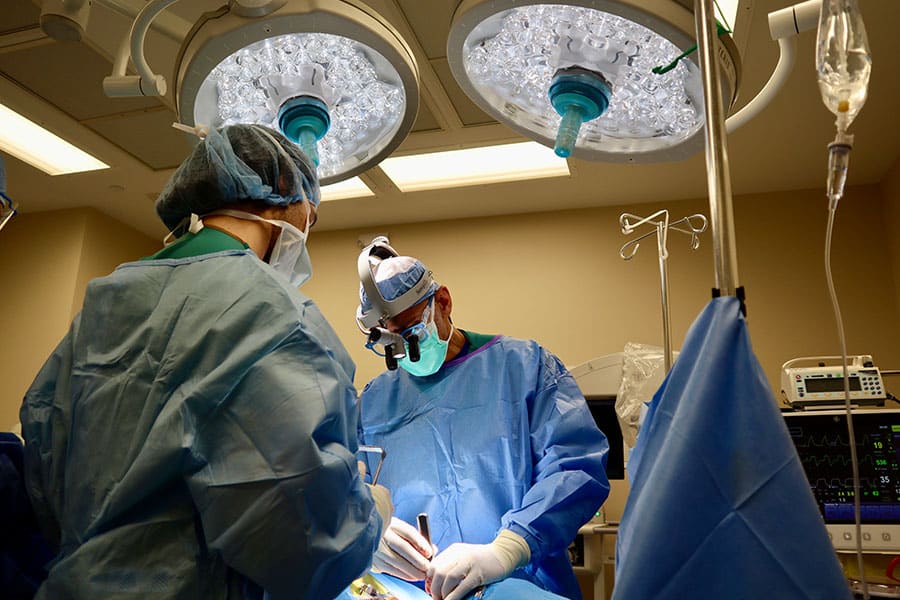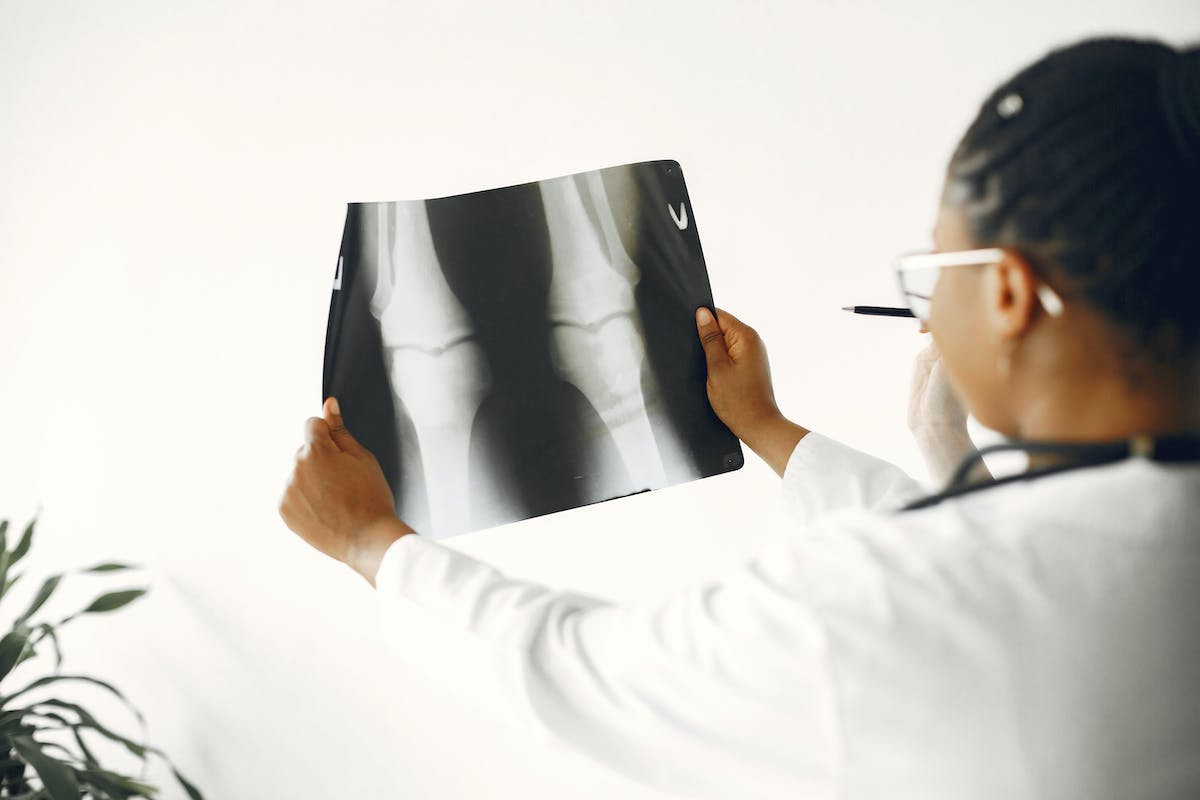In the field of orthopedics, marginal osteophytes are a recurring topic, given their prevalence in conditions such as osteoarthritis. These bony growths, often seen as an unwelcome byproduct of aging, can cause significant discomfort and restrict mobility. But what exactly are these formations and what triggers their development? More importantly, how can they be managed or even prevented? Let’s examine these questions further, for a thorough understanding may illuminate pathways to improved joint health and overall wellbeing.
Understanding Marginal Osteophytes
In the field of orthopedics, marginal osteophytes are bony outgrowths or bone spurs that develop along the edges of the joints, a common manifestation of degenerative joint diseases. The occurrence of osteophytes is highly correlated with aging and wear and tear of the joints, leading to changes in the bone structure and function.
Osteophytes prevention is anchored on maintaining joint health and function through regular physical activity, healthy diet, and weight management. The adoption of correct postures during physical activities and the use of ergonomic tools are also essential in reducing joint strain and preventing degenerative changes.
Osteophytes, though often asymptomatic, can lead to various complications. The protruding bone can cause friction against other bones or soft tissues resulting in pain, stiffness, and restricted joint movement. In severe cases, osteophytes can compress nearby nerves and blood vessels, leading to neurological symptoms like numbness, tingling, and weakness.
Understanding the nature of marginal osteophytes is vital in managing their impact on the joint health and overall quality of life. Early detection and appropriate intervention strategies can mitigate the risk of complications and preserve joint function.
The Anatomy of Joints
To understand the formation and impact of marginal osteophytes, a thorough insight into the anatomy of joints is essential. This involves a detailed exploration of the basic structure of joints, including the bones, cartilage, synovium, ligaments, and tendons. Additionally, the processes that lead to joint degeneration, a key factor in the development of osteophytes, will also be elucidated.
Joint Structure Basics
Understanding the anatomy of joints is fundamental to comprehending the development and implications of marginal osteophytes. Joints are complex structures, consisting of multiple components such as bones, cartilage, synovial fluid, ligaments, and tendons. The importance of joint lubrication cannot be overstated. The synovial fluid facilitates smooth movements by reducing friction between the articular cartilage of the bones. It also nourishes the cartilage, maintaining its health and function. Cartilage preservation techniques involve maintaining a healthy weight, engaging in low-impact exercises, and maintaining a balanced diet rich in nutrients that support cartilage health. Inadequate lubrication or damage to the cartilage can compromise joint function, setting the stage for the growth of osteophytes or bone spurs.
Understanding Joint Degeneration
Joint degeneration, a complex and multifaceted process, primarily involves the gradual wear and tear of articular cartilage, leading to the onset of various musculoskeletal disorders including the formation of marginal osteophytes. This process, inevitable with aging, is often exacerbated by conditions such as osteoarthritis, classified under degenerative diseases.
- Loss of Joint Flexibility: The wearing away of cartilage decreases joint flexibility, impairing movement and causing pain.
- Formation of Osteophytes: As a response to joint instability, the body produces bony projections or marginal osteophytes, further complicating joint functionality.
- Progression of Degenerative Diseases: Left unchecked, these alterations can accelerate the progression of degenerative diseases, causing debilitating pain and disability.
Understanding joint degeneration is essential for early detection and intervention, thereby improving the quality of life.
Causes of Marginal Osteophytes
The development of marginal osteophytes can be attributed to various triggers, which will be explored in the following section. Critical to this discussion is the understanding of age as a key determinant in the onset of these bone spurs. Through this examination, we aim to provide a thorough understanding of the key factors that lead to the formation of marginal osteophytes.
Common Osteophytes Triggers
Several factors contribute to the development of marginal osteophytes, including age, obesity, joint injury, and certain genetic predispositions. The role of genetics in osteophytes development cannot be overstated. Certain inherited traits can predispose an individual to the formation of these bony projections. Additionally, diet plays a significant role in osteophytes formation. High-fat diets, particularly those rich in saturated and trans fats, can lead to obesity, a known risk factor for osteophytes.
- Osteophytes and Genetics: Certain genes can predispose individuals to osteophytes, emphasizing the importance of genetic screening in early detection and prevention.
- Osteophytes and Diet: A diet high in unhealthy fats can lead to obesity, increasing the risk of osteophytes.
- Joint Injury: Trauma to the joints can trigger osteophytes formation due to the body’s attempt to repair the damaged area.
Age and Osteophytes Development
While genetics, diet, and joint injuries play significant roles in the development of osteophytes, advancing age is another key factor that contributes to the formation of these bony outgrowths, particularly marginal osteophytes. Age-related degenerative changes in the joint structure increase the risk of osteophytes, as the body attempts to repair the damaged joint by forming new bone. This process, however, can lead to the formation of abnormal bony protrusions or osteophytes. Osteophytes prevention strategies often include maintaining a healthy lifestyle and diet, as dietary influences can impact overall joint health. Regular physical activity, weight management, and consumption of a balanced diet rich in anti-inflammatory foods can help in mitigating the effects of age on joint health and osteophytes development.
Identifying Symptoms
In patients with marginal osteophytes, signature symptoms often include chronic joint pain, stiffness, and limited range of motion. These symptoms can have a substantial impact on the quality of life and can be indicative of the presence of these bony growths. However, osteophyte prevention is possible, and it largely hinges on lifestyle factors, especially diet influence.
- Chronic Joint Pain: This is a persistent pain that occurs in the joints affected by osteophytes. It is usually the first noticeable symptom and can range from mild discomfort to debilitating pain.
- Stiffness: Joint stiffness is another common symptom. Affected joints may lose their flexibility, leading to a decrease in the range of motion and difficulty in performing daily activities.
- Limited Range of Motion: As the osteophytes grow and interfere with the normal joint functioning, they can restrict the joint’s movement. This can manifest as an inability to fully extend or bend the joint.
It is important to note that these symptoms do not always correspond to the size or number of osteophytes, meaning even small osteophytes can cause significant discomfort. Therefore, early detection and management are vital to prevent further joint damage and maintain overall health.
The Role of Age in Osteophytes
Understanding the symptoms of marginal osteophytes is just one aspect of this condition; it’s equally important to take into account the role that age plays in their development and progression. As people age, the body undergoes numerous physiological changes that can predispose an individual to osteophytes, including a diminishing age-related immunity. The immune system, with its decreased ability to repair and maintain tissues, can lead to the formation of these bony outgrowths at the margins of joints.
In addition to age-related immunity, the impact of genetics on osteophytes cannot be overlooked. Certain genetic predispositions can make individuals more susceptible to the development of osteophytes as they age. Recent research indicates that genetic factors can play a substantial role in influencing the body’s response to the wear and tear of aging, ultimately affecting the likelihood of osteophyte formation.
The role of age in osteophytes is an intricate interplay of physiological changes, immune system alterations, and genetic predispositions. Understanding these factors offers critical insights into the development and progression of this condition, providing a foundation for more focused and effective treatment approaches.
Marginal Osteophytes and Arthritis
Marginal osteophytes, a type of bone spur, are often found in joints affected by arthritis. This connection between osteophytes and arthritis raises questions about their significant influence and impact on patients’ health. An in-depth examination of these factors is essential for a deeper understanding of disease progression and management.
Understanding Marginal Osteophytes
Often associated with arthritis, marginal osteophytes are tiny, bony projections that develop along the edges of bones, particularly in the joints. Their formation can cause discomfort and limit joint mobility, impacting the quality of life.
Understanding the formation and prevention of osteophytes is crucial. Here are three key points:
1. Osteophytes formation is often a body’s response to joint degeneration. It’s an attempt to improve the function of the joint, but unfortunately, it often exacerbates the problem.
2. They mainly occur in weight-bearing joints, such as the knee and hip, but can also develop in the hands and spine.
3. Prevention involves maintaining a healthy weight, regular exercise, and early treatment of joint injuries.
Grasping these details can empower individuals to take proactive steps for their health.
Arthritis and Osteophytes Connection
As we further explore the relationship between marginal osteophytes and arthritis, it becomes clear that these bony outgrowths are not just a symptom of degenerative joint disease but also a significant contributor to its progression. The formation of osteophytes is often influenced by genetic predisposition, making some individuals more susceptible to their development. Additionally, certain arthritis medications can have effects on the growth of osteophytes. While they may decrease inflammation and pain, they do not necessarily halt the osteophyte formation. The link between arthritis and osteophytes is hence complex and multifactorial, involving a dynamic interplay between genetic factors, medication effects, and the body’s natural response to joint degeneration. Further research is needed to better understand this connection and optimize treatment strategies.
Diagnostic Processes for Osteophytes
Employing a range of diagnostic tools, medical professionals can accurately identify the presence and severity of osteophytes. Osteophytes imaging techniques provide detailed pictures of these bone spurs, enabling doctors to make a thorough diagnostic accuracy comparison.
- Radiography: This imaging technique is highly sensitive to detecting osteophytes in various joints of the body. It offers a clear picture of the bone structures, helping physicians to identify the existence of any abnormal bone growth.
- Magnetic Resonance Imaging (MRI): MRI is superior in detecting osteophytes in the spine due to its ability to provide detailed images of soft tissues, including the spinal cord and nerves. It can even recognize marginal osteophytes, which are often smaller and harder to visualize.
- Ultrasound: This non-invasive method is used to detect osteophytes in peripheral joints. It’s particularly beneficial in diagnosing osteophytes in the early stages when they are not yet visible on radiographs.
These diagnostic techniques, when utilized strategically, provide a deep understanding of the patient’s condition. This aids in developing a tailored treatment plan, taking into consideration the severity and location of the osteophytes.
Treatment Options Available
Once osteophytes have been accurately diagnosed, a variety of treatment options can be explored, each tailored to the patient’s specific condition and the location and severity of the bone spurs.
Non-surgical interventions often serve as the first line of treatment, designed to manage symptoms and slow the progression of the condition. These interventions may include medication, physical therapy, and lifestyle changes. Medications commonly used are non-steroidal anti-inflammatory drugs (NSAIDs) to reduce inflammation and pain. Physical therapy can help improve flexibility, strength, and range of motion, reducing discomfort and enhancing function.
In addition to these medical treatments, alternative therapies are also an integral part of osteophyte management. These therapies aim to alleviate symptoms and improve overall well-being, often complementing traditional medical treatments. Examples may include acupuncture, chiropractic care, massage therapy, and nutritional supplements, all of which can play a role in effective pain management.

Surgery and Marginal Osteophytes
When conservative treatments fail to provide relief or when the marginal osteophytes greatly impede joint movement, surgical intervention becomes an important consideration. This approach is typically reserved for severe cases, aiming to remove the osteophytes and restore joint mobility. However, surgery is not without risks and requires careful consideration.
- Post-surgery rehabilitation: This is vital for regaining strength and flexibility. Rehabilitation often includes physical therapy and exercises tailored to the patient’s condition and recovery pace.
- Implant complications: In some cases, an artificial joint replacement may be necessary. However, this can lead to potential complications such as infection, blood clots, or implant loosening.
- Emotional impact: Surgery can have significant emotional implications, including anxiety about the procedure and recovery process, which should not be underestimated.
Lifestyle Modifications for Management
In managing marginal osteophytes, adopting certain lifestyle modifications can serve as an important adjunct to traditional medical treatments, enhancing overall wellbeing and potentially slowing the progression of the condition. One such modification is the dietary impact, which involves maintaining a balanced diet rich in calcium and vitamin D to strengthen bones, in addition to reducing intake of inflammatory foods like refined sugars and unhealthy fats. Adequate hydration is also vital as it helps maintain the health of the spinal discs.
Incorporating suitable exercise routines can also be highly beneficial. Regular physical activity promotes bone and joint health, improves flexibility and can help maintain a healthy weight, reducing stress on weight-bearing joints and thereby alleviating symptoms. Low-impact exercises such as swimming, walking, and yoga are often recommended as they are gentle on the joints.
However, it is essential to consult a healthcare professional before starting any new dietary or exercise regimen to make sure it’s safe and suitable for one’s individual health needs. By combining these lifestyle modifications with medical treatments, patients can effectively manage their condition and improve their quality of life.
Research and Future Developments
Ongoing advancements in the field of medical research continue to illuminate new insights into the understanding and treatment of marginal osteophytes. The exploration into osteophytes genetic links and the influence of nutrition on osteophyte development presents promising avenues for future advancements.
Presently, there are three primary areas of research that hold significant potential:
- Genetics: Studies are underway to reveal the genetic predispositions that may contribute to the development of osteophytes. Understanding these connections could enable early detection and more targeted treatments, thereby potentially reducing the prevalence and severity of this condition.
- Nutrition: The role of nutrition in bone health is undisputed. Current research is focused on understanding how specific dietary habits and nutritional deficiencies contribute to osteophyte growth and progression.
- Treatment Modalities: Advancements in non-invasive treatment options, such as physiotherapy and medication, are being explored. These could provide alternatives to surgery and potentially improve patient outcomes.
These ongoing studies could transform the approach to managing osteophytes, providing patients with more effective, personalized treatment plans. The future holds much promise in the battle against osteophytes, and ongoing research is crucial to revealing these potential advancements.
Frequently Asked Questions
Are There Any Specific Exercises to Prevent Marginal Osteophytes?
Yes, exercises like strength training and flexibility routines can aid in osteophyte formation prevention. Regular physical activity enhances joint health, potentially reducing the risk of marginal osteophyte development. Always consult a healthcare provider for personalized advice.
How Does Diet Impact the Development of Marginal Osteophytes?
Diet has a substantial impact on osteophyte development. Consuming osteophyte prevention foods, rich in essential nutrients and vitamins, can aid in joint health. A dietary impact analysis can help to personalize and optimize diet for preventing osteophyte formation.
Are Marginal Osteophytes Hereditary?
Marginal osteophytes may have hereditary risk factors, although lifestyle and aging are significant contributors. Genetic testing can potentially identify predisposition towards osteophytes, but further research is necessary to fully understand the genetic components.
Can Marginal Osteophytes Affect Other Body Parts Apart From Joints?
Yes, marginal osteophytes can impact other body parts beyond joints, such as spinal nerves, causing pain and mobility issues. Proper pain management strategies are essential to mitigate these potential osteophytes-induced complications.
Are There Any Known Complications Associated With Osteophyte Surgery?
Yes, osteophyte surgery can have associated risks such as infection, nerve damage, and postoperative pain. The recovery process varies, depending on the patient’s health status and the surgery’s complexity.


